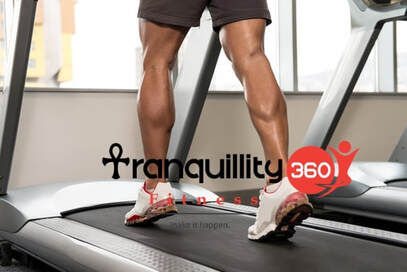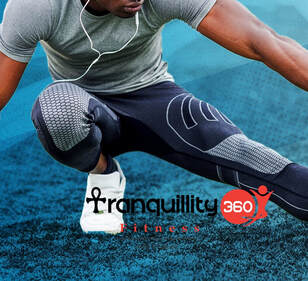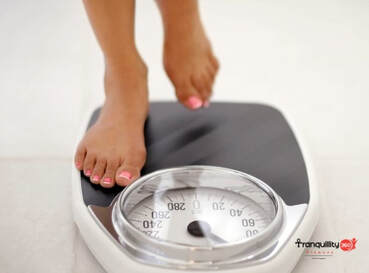 Calorie counters on treadmills, ellipticals, and other cardio machines are convenient. At the end of your work, the number of calories you burned can be surprising. It can certainly make you feel better and keep you motivated to run or exercise more. It's important to know that these calculated calories are just rough estimates. While some types of cardio machines are more accurate than others, none of them will be 100 percent accurate. In general, they overestimate your calorie burn by 15 to 20 percent because there are too many factors involved. Learn what these factors are and how you can improve your estimated burned calories. Calorie Burn Factors Many of the high-tech cardio machines found in gyms today ask you to enter your personal details before you begin. This often includes your weight and some also factor your gender and age into the equation. The problem, however, is that there are other important factors to consider. Cardio machines such as treadmills use standard formulas to figure out the number of calories burned. It is like a calorie-burn formula that you can do on your own. In either of these, factors like your fitness level and your body composition and size are not accounted for.1
Experience and Efficiency More than with other machines, when you run on a treadmill, your form and efficiency play a larger role in calorie burn. The machine cannot account for these factors. This is because beginner runners tend to be inefficient, running with a side-to-side movement and lots of bouncing up and down. These extra motions expend more energy than the experienced runner's efficient stride. This will change over time as a beginner runner perfects her/his stride, but it's an important consideration. Also, if you are using the handrail on a treadmill or stair stepper, you may be diminishing your calorie burn because you're making the workout easier. You won't be swinging your arms naturally with your stride. Due to the way athletes use them, there are also variables in the accuracy of different types of machines. For example, a stationary bike limits movement so everyone uses it in generally the same way. The calorie counters on these are much more accurate than treadmills and stair steppers, which offer more freedom of movement. Cardio Machine Formulas The formulas that cardio machines use to calculate can vary from one manufacturer to another. Generally, most machines will base their formula on The Compendium of Physical Activities. Initially developed in 1987 and receiving regular updates, it assigns a value to a variety of activities, from exercise to inactivity, and sex to home repairs. The values are based on the Metabolic Equivalent, known as MET. he amount of energy (calories) you burn for other activities is compared with this baseline. Once again, there are many factors involved and the Compendium gives many options. For instance, the running category is filled with variables. It states that jogging burns 7.0 MET (7.0 kcal/kg/hour), running 6 miles per hour (a 10-minute mile) burns 9.8 MET, and running 10 miles per hour (a 6-minute mile) burns 14.5 MET. This does not account for any factors relating to you personally. Wearable Fitness Trackers If you can't rely on the cardio machine's calorie counter, can you turn to your personal fitness tracker? These popular wearable devices can monitor all sorts of your things related to your health and activity level, so they're a great option for tracking your workouts. A study at Stanford University took a look at seven different devices to check their accuracy. The results showed that the most accurate of them was off by an average of 27 percent and the least accurate by 93 percent.2 The heart rate monitor was the most reliable function, but the researchers concluded that the calorie counter should not be counted on. Reliable Alternatives Whether it's a cardio machine or your fitness tracker, it's best to take the calories burned readings with a grain of salt. It's fine to use the numbers as a benchmark for your workouts, but don't plan on consuming additional calories based on that number. Sometimes, this leads to gaining weight despite your best exercise efforts. You can also gauge your workout by your perceived exertion or track your target heart rate. This can also help you when moving from one machine to another. If you get the same reading on two machines for the same duration but one seems easier, you're probably burning fewer calories on the easier machine. Foot Note Having a general idea of how many calories you're burning during exercise is a good way to manage your health and weight. Just keep in mind that any of the calorie counters are probably overestimating what you're burning. These are just numbers, though, and how you feel after the workout is more important
2 Comments
 The moment you go on a run, the body produces lactic acid which makes the muscles fatigued and sore. Hence, it is important to stretch as stretching eliminates the lactic acid that has accumulated inside the body and relaxes the muscle Post-run is a great time to stretch because your muscles will be warmed up. These stretches target areas that frequently get tight during and after running. Make them part of your post-run routine to help improve your flexibility, comfort, and performance. I am going break down for you, five essential stretches you should be doing, that can help to prevent DOMS and minor injuries are running Hamstring This hamstring stretch feels great, and it's easier on your back than the bending-over stretch. Here's what to do: 1. Lie on your back with your legs extended and your back straight. Make sure your lower back is on the floor and your hips are level. 2. Bend your left knee and keep your left leg extended on the floor. 3. Slowly straighten your right knee, grabbing the back of your leg with both hands. 4. Gently pull your right leg towards you while keeping your hips on the floor. Hold for 20 to 30 seconds. Repeat on your left side. If straightening your leg is too difficult, you can also do this stretch with a bent knee. Quadriceps Your quadriceps (front thighs) are powerful muscles that work hard when you're running, so it's important that you stretch them. Here's what to do: 1. Stand straight (don't lean forward), lift the foot of your cramping leg up behind you, and grab your foot with your hand on that side. 2. Pull your heel gently toward your butt, feeling a stretch in your quad. 3. Keep your other leg straight and try to keep your knees as close together as possible. 4. Hold the stretch for 15 to 30 seconds. Release and repeat. Switch legs and repeat steps on the other leg. Lower Calf Your calf muscles work hard when you're running, so they'll need a good stretch when you're done. Stretching your calves can also help prevent shin splints. Here's what to do: 1. To begin, stand facing up a flight of stairs or exercise step. 2. Position yourself so that the ball of your foot and your toes are on the edge of the step. You can hold a railing or wall for extra support. 3. Drop the heel of one foot toward the ground, while bending the knee of the opposite leg. You should feel the stretch in the calf of the leg dropping the heel. 5. Hold for 30 to 60 seconds, then repeat with the opposite side. IT Band This is a great stretch for your hip flexor muscles, which work hard lifting your legs up during running. Here's what to do: 1. Step into a lunge position. 2. Keep your toes pointed forward and your upper torso straight. Your back leg should be straight back behind you. 3. Press down with your hands and extend the hips forward until you feel a stretch from the front of your hip and the top of your thigh (of your back leg). 4. Hold 30 to 60 seconds, then switch sides.  If you talk with most people in the fitness world, they will tell that 3 out every 10 persons that started an exercise program to lose weight only to find their weight going up. That change in the scale doesn't necessarily mean you're doing anything wrong, nor does it mean you're going in the wrong direction. There can be some obvious and not-so-obvious reasons you're gaining weight. Are You Really Gaining Fat? Your first step is to determine if what you're gaining is fat, muscle, or water. Muscle is denser than fat, but it takes up less space. That means if you gain muscle, your scale weight may go up even as you're slimming down. It's normal for you to lose inches, even if you're not losing weight. Another culprit is water retention. There's a theory that the body will retain water when you exercise, not only as part of the healing process but also as a method of getting glycogen to the body in a more efficient way. That more efficient fuel system means you may carry around a few extra pounds of water.1 Either way, the scale can't tell you any of this, which is why it isn't always the best way to measure progress. One option is to forget the scale, at least for a little while, and get your body fat tested. You can do with a home body fat scale, or by a trainer at your gym. If these aren't options, take measurements at different areas of the body on a regular basis. If you're losing inches, you're on the right track. 5 Reasons You May Be Gaining Weight on an Exercise Program If you've measured yourself in different ways and realized you really are going in the wrong direction, take some time to go through the following possibilities—you may need to make some small changes in your diet to see better results. You're Eating Too Many Calories It may seem obvious, but people sometimes eat more after starting an exercise program to compensate for burning those extra calories. You may think you're eating a healthy, lower-calorie diet but, unless you're keeping a food diary, you don't know how many calories you're really eating. Most people are surprised when they start keeping a journal and begin adding up the calories. It almost always turns out to be more than they thought. Keep a food diary for at least a week or use an app or online tracking site like MyFitnessPal or Fit Watch to get a sense of what and how much you're eating. If you discover you are eating too many calories, you can make changes in your diet to reduce your calories. Try to avoid the mindset that says you can eat whatever you want since you're doing all this great exercise. To lose weight, you still need to monitor your calories. You're Not Eating Enough Calories It may seem counterintuitive but eating too few calories can stall your efforts to lose fat. As Cathy Leman, a registered dietitian and creator of Nutri Fit! says, "...if there is a severe restriction in calories, the body may counteract this reduction by slowing down its metabolism." Be sure you're eating enough calories to sustain your body, especially if you've increased your activity. You're Not Giving Your Body Time to Respond Just because you start exercising doesn't always mean your body will respond to that immediately. As Cathy Leman puts it, "...in some instances the body needs to sort of 'recalibrate' itself. Increased activity and new eating habits, such as taking in more or fewer calories require the body to make adjustments." Give yourself several weeks, even months to allow your body to respond to what you're doing. You didn't gain weight overnight, and you won’t lose it overnight either. You must exercise and reduce calories most of the time to really see significant changes. That means, weight loss isn't always a linear process. Sometimes you'll lose and then something happens, sickness or injury, that changes your plans and sets you back a bit. That's normal and something you must build into your plan. You Have an Underlying Medical Condition If you really believe you're eating less and exercising more, creating the calorie deficit you need to lose weight, now is the time to talk to your doctor, While not everyone has thyroid problems, they can cause weight gain and weight loss to be more challenging. You'll also want to discuss any medications you're taking that could affect your body's ability to lose weight.2 Keep in mind that age can also be a factor in slow weight loss. It's unfortunate that getting older means it's that much harder to lose weight as your metabolism changes. It's nothing you're doing wrong, just one more thing to pay attention to. You're Gaining Muscle Faster Than You're Losing Fat If it seems that you're getting bigger after you've started a weight training routine, it may be because you aren't losing body fat as fast as you're building muscle—a common problem. Genetics can play a role; some people put on muscle more easily than others. If that's the case for you, don't stop training. Instead, you might simply adjust your program to make sure you're getting enough cardio exercise to promote weight loss and focus your strength training workouts on muscular endurance by keeping the reps between 12 to 16. Foot Note Whatever is the cause of your weight gain, don't give up on exercise. It's often a temporary situation that will correct itself if you just keep going and, if it doesn't, don't give up all that great exercise time you've collected. Consider hiring a trainer or meeting with a dietitian to help you tweak your workouts and diet. Sometimes, all you need are a few different changes. |
AuthorsThis blog is updated by Tranquillity 360 fitness personal trainers, as well as other guest bloggers. Archives
July 2021
Categories |

 RSS Feed
RSS Feed